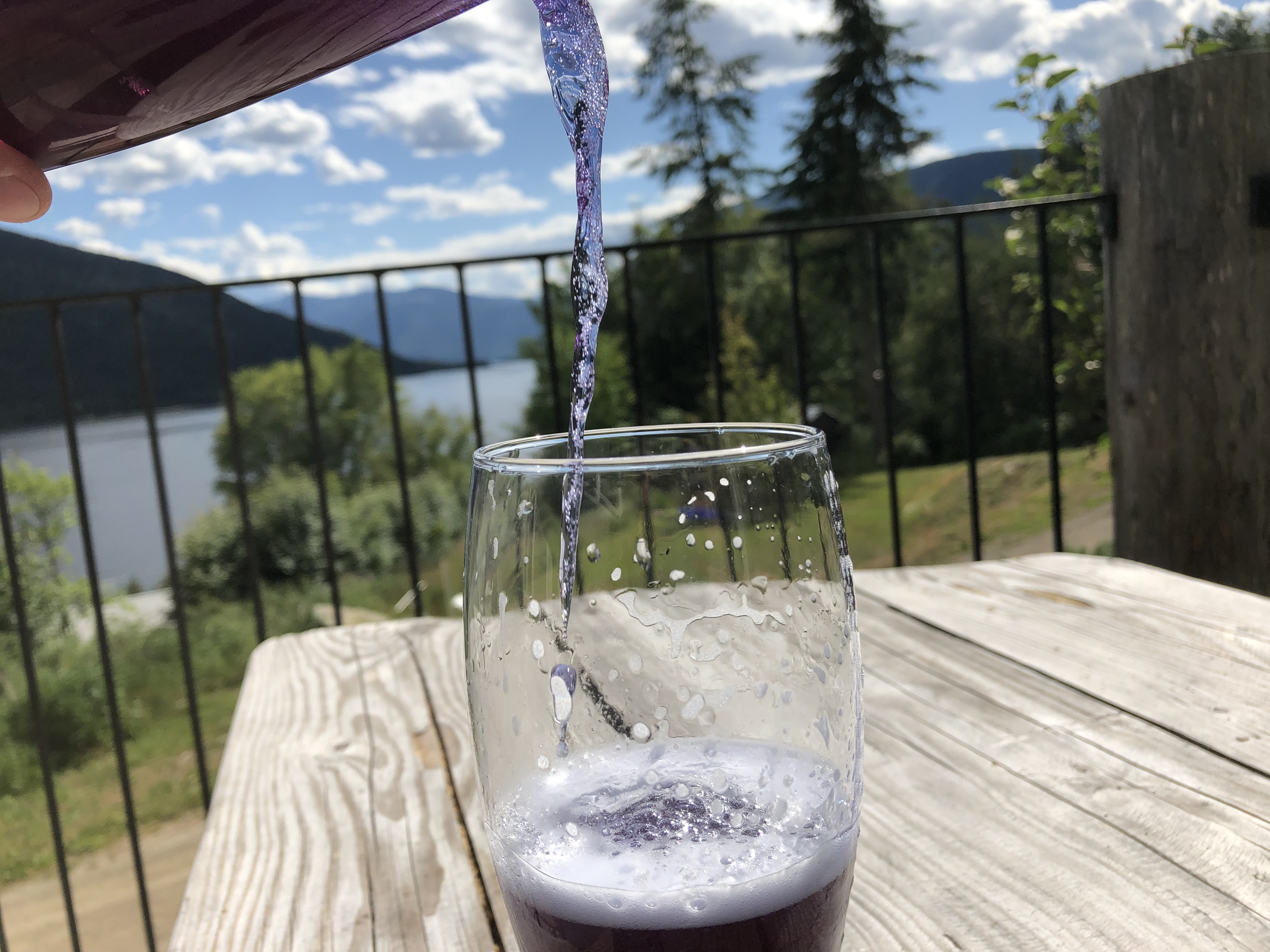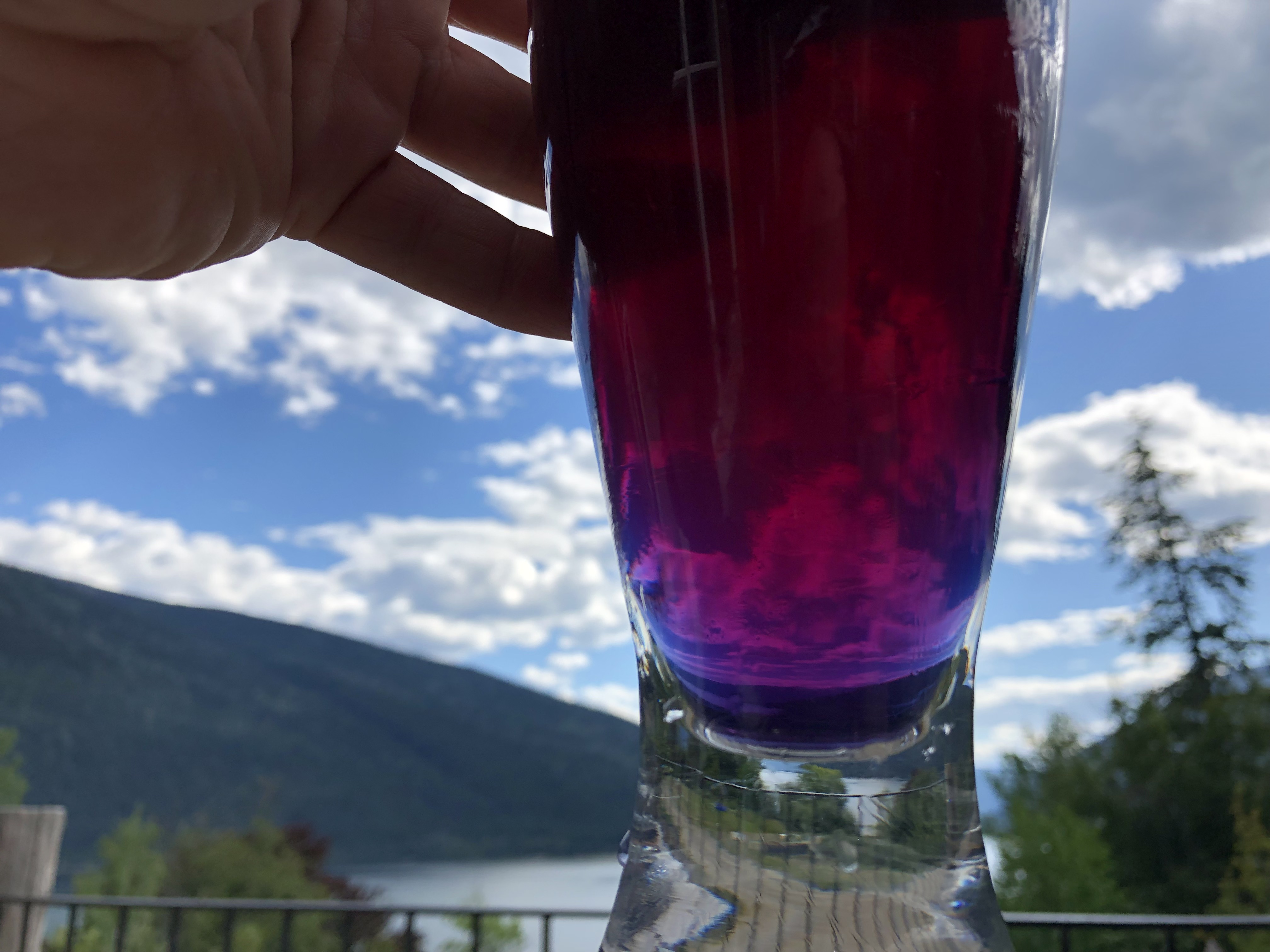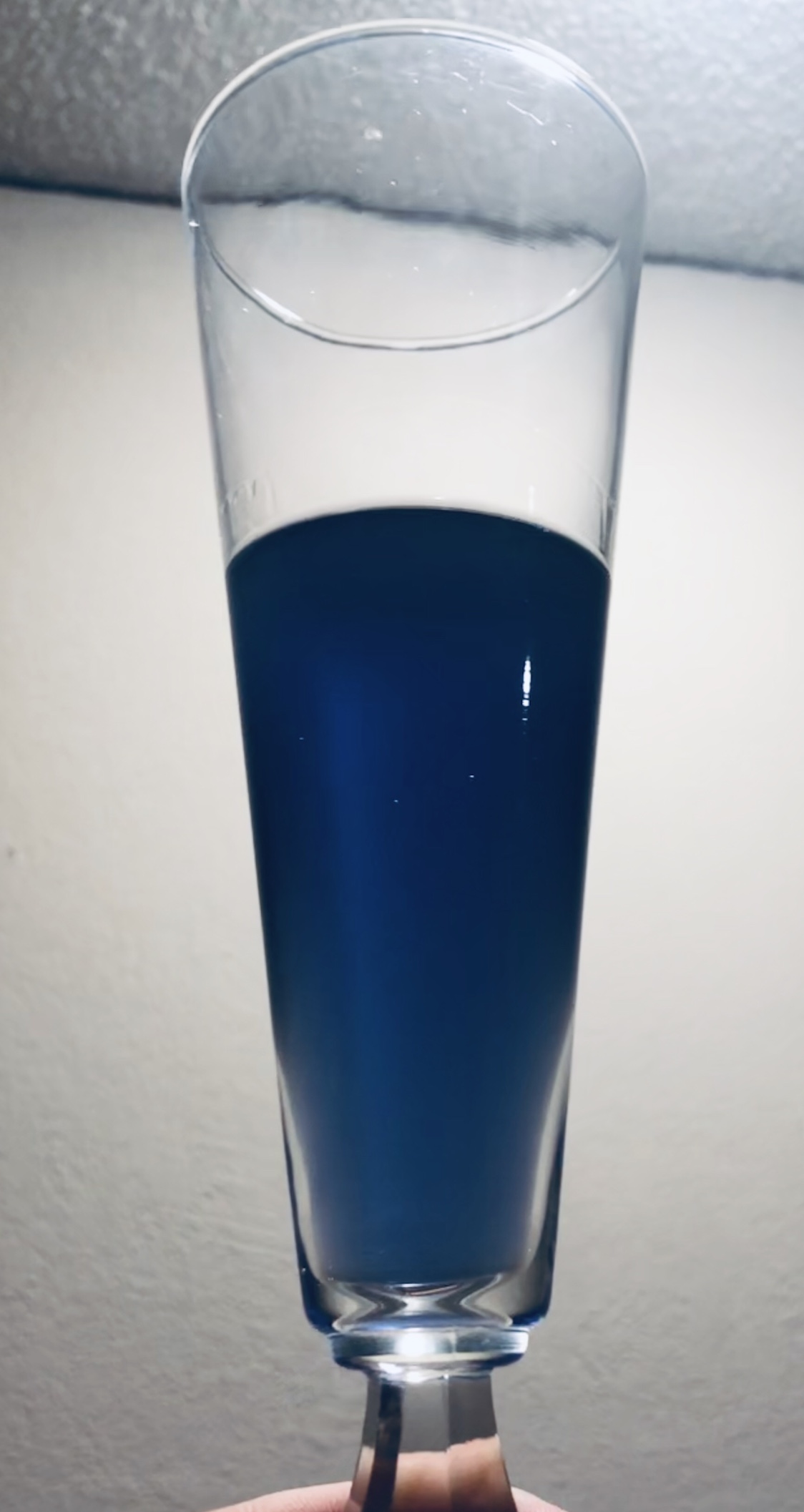You are using an out of date browser. It may not display this or other websites correctly.
You should upgrade or use an alternative browser.
You should upgrade or use an alternative browser.
Blue beer: lets beat this dead horse
- Thread starter Grod1
- Start date

Help Support Homebrew Talk:
This site may earn a commission from merchant affiliate
links, including eBay, Amazon, and others.
Julian Høstan Urrea
Soyyojuli
Really cool. Been following this thread since the beginning. How does it taste?Wife convinced me to go big or go home.
Used my entire supply of unaged whiskey to make the buffering solution. Used a dilution between the 400 and 200.
Final product is in fact blue from every angle and light.
View attachment 627796
View attachment 627797
View attachment 627798
Do we really want to know?Really cool. Been following this thread since the beginning. How does it taste?
Also, here's my result. Well water + pilsen LME + Boadicea hops + clitoria. About 3.5% ABV. Not anywhere close to blue, haha!
I'm tempted to just make blue hop infused dilute vodka. XD 95% ABV alcohol, distilled water, hops, clitoria, dilute to 3.5-6.5% ABV or so.
Attachments
I tried adding sodium bicarbonate to a small sample of this... after dumping a lot more sodium bicarbonate than there was liquid originally, I still only got green. Obviously, it tasted gross. Still, my wife likes the color of my Clitori'ale, so even if it's not blue, it's not an utter failure. 
Dan w
New Member
- Joined
- Jun 10, 2019
- Messages
- 1
- Reaction score
- 0
What do you guys think about brewing with alkaline water to counteract the possibility of acidity changing the blue color from the pea flower? I also just made a second attempt at this endeavor and so far so good but I was worried about the acidity.
Northern_Brewer
British - apparently some US company stole my name
pH is important for optimal activity of enzymes, and if you go over pH6 or so there's a risk of extracting astringent compounds in the grain, and it also affects the final taste of the beer, so it's kinda hard to go too alkaline without affecting flavour.

$53.24
1pc Hose Barb/MFL 1.5" Tri Clamp to Ball Lock Post Liquid Gas Homebrew Kegging Fermentation Parts Brewer Hardware SUS304(Gas MFL)
Guangshui Weilu You Trading Co., Ltd

$7.79 ($7.79 / Count)
Craft A Brew - LalBrew Voss™ - Kveik Ale Yeast - For Craft Lagers - Ingredients for Home Brewing - Beer Making Supplies - (1 Pack)
Craft a Brew

$22.00 ($623.23 / Ounce)
AMZLMPKNTW Ball Lock Sample Faucet 30cm Reinforced Silicone Hose Secondary Fermentation Homebrew Kegging joyful
无为中南商贸有限公司

$28.98
Five Star - 6022b_ - Star San - 32 Ounce - High Foaming Sanitizer
Great Fermentations of Indiana

$20.94
$29.99
The Brew Your Own Big Book of Clone Recipes: Featuring 300 Homebrew Recipes from Your Favorite Breweries
Amazon.com

$33.99 ($17.00 / Count)
$41.99 ($21.00 / Count)
2 Pack 1 Gallon Large Fermentation Jars with 3 Airlocks and 2 SCREW Lids(100% Airtight Heavy Duty Lid w Silicone) - Wide Mouth Glass Jars w Scale Mark - Pickle Jars for Sauerkraut, Sourdough Starter
Qianfenie Direct

$176.97
1pc Commercial Keg Manifold 2" Tri Clamp,Ball Lock Tapping Head,Pressure Gauge/Adjustable PRV for Kegging,Fermentation Control
hanhanbaihuoxiaoshoudian

$58.16
HUIZHUGS Brewing Equipment Keg Ball Lock Faucet 30cm Reinforced Silicone Hose Secondary Fermentation Homebrew Kegging Brewing Equipment
xiangshuizhenzhanglingfengshop

$39.22 ($39.22 / Count)
Brewer's Best Home Brew Beer Ingredient Kit - 5 Gallon (Mexican Cerveza)
Amazon.com
![Craft A Brew - Safale S-04 Dry Yeast - Fermentis - English Ale Dry Yeast - For English and American Ales and Hard Apple Ciders - Ingredients for Home Brewing - Beer Making Supplies - [1 Pack]](https://m.media-amazon.com/images/I/41fVGNh6JfL._SL500_.jpg)
$6.95 ($17.38 / Ounce)
$7.47 ($18.68 / Ounce)
Craft A Brew - Safale S-04 Dry Yeast - Fermentis - English Ale Dry Yeast - For English and American Ales and Hard Apple Ciders - Ingredients for Home Brewing - Beer Making Supplies - [1 Pack]
Hobby Homebrew

$10.99 ($31.16 / Ounce)
Hornindal Kveik Yeast for Homebrewing - Mead, Cider, Wine, Beer - 10g Packet - Saccharomyces Cerevisiae - Sold by Shadowhive.com
Shadowhive

$479.00
$559.00
EdgeStar KC1000SS Craft Brew Kegerator for 1/6 Barrel and Cornelius Kegs
Amazon.com

$53.24
1pc Hose Barb/MFL 1.5" Tri Clamp to Ball Lock Post Liquid Gas Homebrew Kegging Fermentation Parts Brewer Hardware SUS304(Gas MFL)
yunchengshiyanhuqucuichendianzishangwuyouxiangongsi
Soulshine2
Well-Known Member
mood ring beer???As a Kentucky Wildcats fan this blue beer thing intrigues me.
A little tidbit from my friend the internet(eater.com); "Butterfly pea tea has an incredibly sensitive pH balance, meaning even the slightest shift in acidity can turn a beverage from deep blue, to a vibrant plum, to a fizzy magenta. The drink becomes a sippable chameleon: The more acid that comes in contact with the tea, the lighter in color it becomes. From pH 8 to pH 4, the tea is a regal shade of blue. It quickly shifts into deep purple terrain at pH 3, and finally bursts into carnation pink territory at pH 2."
lump42
The Lajestic Vantrashell of Lob
It seems many are trying really hard to recreate the wheel. There are several food companies that are working on natural blue dyes that are more pH stable. A quick glance around the interwebs would lead me to suggest some of the spriulina extracts. McCormick's Color from Nature product has a blue packet that is based on spirulina and may be worth checking at what pH the color changes. It's only $6 on amazon.
This company from Japan claims to have a spirulina extract that is color stable to pH 4.6. It's not heat stable to our mash and boil temps so it would be better to add post boil.
This company from Japan claims to have a spirulina extract that is color stable to pH 4.6. It's not heat stable to our mash and boil temps so it would be better to add post boil.
What do you guys think about brewing with alkaline water to counteract the possibility of acidity changing the blue color from the pea flower? I also just made a second attempt at this endeavor and so far so good but I was worried about the acidity.
I don't think you can have water that's alkaline enough to offset the acidity of the fermentation to be had (unless being so alkaline even the yeast won't survive and thus won't ferment).
My attempt...it is very much an iridescent beer more than either exactly blue or purple. Out of my tap it is pure blue coming out, but once the optical path is more than a couple inches, it is purple. It looks great in glassware that has varying widths.
I used 75g of the whole dried butterfly pea flowers steeped for 20 minutes in 1.5L of water at 80C...I then cooled that down and added it all to the fermenter for 4 days, along with tropical forward hops in a strainer bag. I tried to keep my water profile a little more on the alkaline side by adding calcium carbonate towards the end of the boil. I also used a yeast that tends to not finish too low on the pH scale and dry hopped heavy. The SRM was 4.3 before the flower addition.


I used 75g of the whole dried butterfly pea flowers steeped for 20 minutes in 1.5L of water at 80C...I then cooled that down and added it all to the fermenter for 4 days, along with tropical forward hops in a strainer bag. I tried to keep my water profile a little more on the alkaline side by adding calcium carbonate towards the end of the boil. I also used a yeast that tends to not finish too low on the pH scale and dry hopped heavy. The SRM was 4.3 before the flower addition.


I tried adding sodium bicarbonate to a small sample of this... after dumping a lot more sodium bicarbonate than there was liquid originally, I still only got green. Obviously, it tasted gross. Still, my wife likes the color of my Clitori'ale, so even if it's not blue, it's not an utter failure.
Actually if you’re green, you went too far with too much sodium bicarbonate.
Even in mine I think I went to far because it seems to have obliterated any malt and hop flavors.
Actually if you’re green, you went too far with too much sodium bicarbonate.
Even in mine I think I went to far because it seems to have obliterated any malt and hop flavors.
Well, yea, but before going to green, it never passed by blue. The must was not very light-colored, so any blue from the clitoria gets mixed with the red from the malt. I'd have to try again with an american light lager malt bill to hope getting something closer to blue. pH was certainly a factor, but not the only one.
This horse has more lives than several cats 

Well, yea, but before going to green, it never passed by blue. The must was not very light-colored, so any blue from the clitoria gets mixed with the red from the malt. I'd have to try again with an american light lager malt bill to hope getting something closer to blue. pH was certainly a factor, but not the only one.
The red isn’t from the malt. It’s the pH sensitivity of the color. You went from not enough… not enough… too much!
And depending on the volume you were working with, it’s very easy to do if the volume is small.
Northern_Brewer
British - apparently some US company stole my name
Ah, good old Clitoria. You want to be careful with that, as I suspect it acts like litmus and will go pink in something as acid as beer. Certainly I assume that's what's happening with Sharish "magic gin", which is blue-ish but turns pink when you add tonic and lemon, and contains Clitoria.
Here's some spectrographs of Sharish gin with and without (acidic) tonic water :
https://www.linkedin.com/posts/gary...its-gin-ph-activity-6592980389705375744-I2LW/
(may be easier to see the image file directly)
Northern_Brewer
British - apparently some US company stole my name
Nice pictures of the pH response of Clitoria in beer :
https://www.homebrewtalk.com/forum/threads/blue-beer-with-butterfly-pea-flowers.674117/
https://www.homebrewtalk.com/forum/threads/blue-beer-with-butterfly-pea-flowers.674117/
Let the beating continue!
https://www.reuters.com/business/en...-brewers-use-algae-make-blue-beer-2022-02-03/
The Onion's take: French Brewer Using Algae To Make Blue Beer
Cheers! (Blue vomit indeed! )
)
https://www.reuters.com/business/en...-brewers-use-algae-make-blue-beer-2022-02-03/
The Onion's take: French Brewer Using Algae To Make Blue Beer
Cheers! (Blue vomit indeed!
We want the blue food!
Similar threads
- Replies
- 4
- Views
- 900
- Replies
- 6
- Views
- 3K
- Replies
- 0
- Views
- 2K
- Replies
- 5
- Views
- 4K


















































